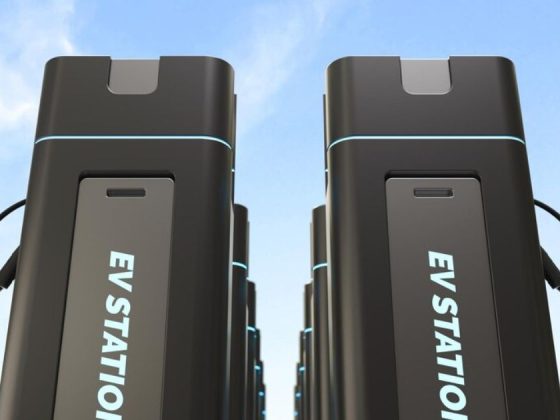Eyewear Redefined: The Journey from Utility to Style
Traditional Eyewear: A Necessity
For centuries, eyewear existed primarily as a medical necessity. Originally designed to address visual impairments like nearsightedness, farsightedness, and astigmatism, glasses were essential tools for enhancing sight. Their design was mainly utilitarian, focused on precision, clarity, and durability rather than appearance. In the early stages, eyewear was often rudimentary, crafted from materials like metal or horn, and available in limited styles that prioritized function over form.
As cultural emphasis on style intensified, the purpose of eyewear began to transform. Throughout the 20th century, it shed its purely corrective identity and stepped confidently into the fashion world. Pioneering brands like Ray-Ban, with its timeless aviators, and Oakley, with its high-performance athletic designs, redefined glasses as bold expressions of individuality and lifestyle. Eyewear evolved beyond mere vision correction to become a distinctive form of self-expression. This shift laid the foundation for a new era, where utility meets design and sets the stage for imaginative leaps into tech-enhanced functionality.
The Rise of Smart Glasses
With the rapid advancement of innovative technology, eyewear took another significant leap. Smart glasses emerged as a new frontier in wearable tech, merging digital functionality with traditional optics. These devices introduced a range of features that went far beyond vision correction. Voice control, real-time notifications, GPS navigation, fitness tracking, and even hands-free communication became part of the user experience.
Companies like Google entered the market early with Google Glass, a product that sparked public imagination and conversation about the future of wearable technology. Although the initial launch faced criticism for privacy concerns and limited functionality, it was a proof of concept that inspired future innovation. Today, Apple, Meta, and Amazon are investing heavily in the smart glasses space, exploring ways to integrate AI, voice assistants, and seamless app ecosystems into eyewear.
This convergence of style and tech has transformed glasses from passive accessories into active tools—extensions of smartphones and computers. For professionals, athletes, and tech-savvy users, smart glasses offer the ability to multitask, receive alerts, and access real-time information while staying visually engaged with the real world. The outcome is a wearable that seamlessly merges fashion, functionality, and digital connectivity, dissolving the lines between aesthetics and technology.
Augmented Reality and Beyond
In navigation, AR glasses project directions directly into the wearer’s field of view, eliminating the need to glance at a phone on foot or behind the wheel. In education, students can interact with intricate 3D models or explore historical reconstructions, enriching their learning experience. For gamers, AR creates immersive new layers of interactivity, merging virtual elements with the real world. In architecture and design, professionals can use AR eyewear to visualize projects in their environments, enhancing precision and creativity.
Devices like Microsoft’s HoloLens, Magic Leap, and Meta’s Quest Pro demonstrate how AR glasses can transform work, education, and entertainment. These devices are increasingly being adopted in specialized fields such as healthcare, where surgeons use AR for enhanced visualization during procedures, and manufacturing, where workers can access step-by-step instructions in their line of sight.
While current AR glasses remain relatively bulky and expensive, advancements in microdisplays, battery technology, and connectivity are making them more compact and user-friendly. As these obstacles are overcome, AR glasses are set to become mainstream tools, revolutionizing interactions with the digital world.
Technological Advancements in Tech-Infused Eyewear
Miniaturization of Components
One of the core engineering challenges in developing tech-infused eyewear is the miniaturization of electronic components. Unlike smartphones or tablets, smart glasses must house sophisticated hardware in a form factor small enough to resemble traditional eyewear. This requires shrinking sensors, processors, displays, batteries, and connectivity modules into compact units that fit within the arms or frame of the glasses, without making them bulky or uncomfortable to wear.
Recent breakthroughs in microelectronics and nanotechnology have enabled this transformation. Components such as micro-LED displays, which provide high-resolution visuals while consuming less power, are increasingly favored in smart glasses. These displays are more compact than traditional screens but also brighter and more energy-efficient, making them suitable for indoor and outdoor environments. In addition, flexible circuits and compact processors are now being designed specifically for wearables, allowing seamless integration into the curves and contours of eyewear without sacrificing performance or aesthetic appeal.
Energy Efficiency and Battery Life
Power consumption remains a significant constraint for wearable technology, with eyewear no exception. Users demand smart glasses that can function for long durations without constant recharging. However, the compact design of the frames limits battery size, making advancements in energy efficiency and battery technology essential for the success of these devices. Recent advances in solid-state batteries, which offer higher energy density, faster charging, and improved safety over traditional lithium-ion batteries, are making their way into wearable tech. Additionally, researchers are exploring energy-harvesting methods, such as solar charging or kinetic energy conversion, to supplement power needs. For example, the surface of the glasses could be used to collect ambient light, extending battery life without adding bulk.
Smart glasses are also becoming more power-conscious at the software level. AI and system optimization help conserve energy by intelligently managing background processes, dimming displays when not in use, or deactivating features when not needed. These enhancements contribute to prolonged usage, making the eyewear more suitable for daily, real-world applications.
Integration with Artificial Intelligence
Artificial intelligence (AI) is rapidly transforming the utility of tech-infused eyewear, turning them into intelligent assistants capable of interpreting and reacting to the user’s environment. AI-driven glasses are no longer just tools for viewing information—they are becoming context-aware, interactive companions.
These glasses can perform real-time language translation using machine learning algorithms, allowing users to see the translated text overlaid in their field of vision during a conversation. Facial recognition capabilities can identify people in social or professional settings, while object recognition helps users understand their surroundings, particularly useful in navigation, shopping, or even healthcare contexts.
AI-powered glasses are being developed for users with visual impairments to offer assisted vision capabilities, such as reading aloud printed text, identifying objects, or guiding movement through auditory or haptic feedback. This not only enhances accessibility but also redefines the role of eyewear as a support tool for independent living.
Connectivity and Ecosystem Integration
Modern tech-infused eyewear isn’t designed to function in isolation—it thrives as part of a broader connected ecosystem. Seamless integration with smartphones, smart home systems, and other IoT devices enables users to control their digital environment effortlessly through eyewear.
Smart glasses connect to personal assistants like Apple’s Siri, Google Assistant, or Amazon Alexa, allowing users to perform hands-free tasks such as sending messages, answering calls, setting reminders, or checking the weather. When synced with smart home devices, users can also adjust lighting, control appliances, or monitor security systems directly through their glasses.
This level of ecosystem interoperability also allows developers to create applications tailored to eyewear, unlocking new use cases in areas such as fitness tracking, productivity, remote collaboration, and entertainment. Whether navigating a new city with live directions, getting notifications without pulling out your phone, or viewing 3D models in a design project, integrating eyewear into the digital ecosystem enhances convenience and capability.
Fashion Meets Function: The Aesthetic Appeal
Design Innovations
With the evolution of technology, the design philosophy guiding tech-integrated eyewear is also transforming. Gone are the days when smart glasses were bulky, awkward-looking gadgets that set the wearer apart. Today’s designs aim to blend seamlessly into contemporary fashion trends, making technology wearable and stylish. Leading eyewear manufacturers collaborate with renowned fashion designers and industrial engineers to craft frames incorporating high-tech components while maintaining a sleek, modern appearance. This shift is critical in ensuring widespread consumer adoption, as people are more likely to wear technology that aligns with their style.
Material innovation has also played a pivotal role in advancing eyewear design. Companies utilize lightweight yet durable materials such as titanium, carbon fiber, and acetate to create functional and fashionable frames. These materials not only support the inclusion of electronics, like batteries, sensors, and display modules, but also contribute to long-term comfort and durability. With these design upgrades, tech-infused eyewear now competes on features and visual appeal, making it a compelling accessory for tech enthusiasts and fashion-forward consumers.
Customization and Personalization
Personalization has become a key driver of consumer satisfaction in today’s market, and the eyewear industry is no exception. Buyers no longer want one-size-fits-all solutions; they want products that reflect their unique identities. Tech-infused eyewear brands are responding to this demand by offering a range of customizable features, including interchangeable lenses, adjustable nose pads, and frame shapes or sizes that cater to different facial structures. Whether a user prefers a classic, minimalist design or a bold, avant-garde look, there are now more options than ever to ensure that their eyewear complements their personality.
Additionally, brands are leveraging digital tools to enhance the customization experience. Online configurators and augmented reality (AR) try-on apps allow customers to preview different colors, materials, and designs on their faces before purchasing. This technology-driven approach not only increases buyer confidence but also reinforces the core value of personalization. For many users, having the ability to curate their eyewear choices to match their wardrobe, lifestyle, or even mood makes the product feel less like a gadget and more like a valid extension of their identity.
Influencer and Celebrity Endorsements
The rise of influencer culture has significantly reshaped consumer perceptions of wearable technology, including smart eyewear. Previously, tech-heavy glasses were often viewed as niche or overly geeky. However, the endorsement of tech-infused eyewear by celebrities, athletes, and social media influencers has changed this narrative. When well-known personalities are seen sporting smart glasses, mainly in lifestyle, fashion, or performance, it elevates the product’s visibility and appeal. Collaborations between brands and cultural icons also help validate the eyewear’s place in mainstream fashion, transforming it from a tech novelty into a coveted accessory.
Social media platforms, particularly Instagram and TikTok, amplify these endorsements, turning a single photo or video into a viral fashion moment. Influencers often showcase how the glasses function in real-life scenarios—whether taking a call hands-free, navigating a city or capturing content—which resonates strongly with younger, tech-savvy audiences. These marketing strategies increase product awareness and build trust and desirability around the brand. As a result, smart eyewear is no longer just about utility—it’s becoming an aspirational lifestyle product, thanks in large part to the influence of public figures who shape trends in fashion and technology alike.
The Future of Smart Eyewear
Tech-infused eyewear marks the intersection of vision correction, digital innovation, and personal expression. Evolving beyond traditional lenses, modern designs integrate technology to create a seamless blend of utility, aesthetics, and enhanced daily experiences.
With continued growth, the industry faces the challenge of aligning innovation with sustainability principles, data privacy, and broad accessibility. When thoughtfully developed, smart eyewear holds the potential to become as essential as smartphones, redefining interactions with both the environment and society. Future developments in eyewear promise clearer vision and more profound, meaningful ways of perceiving the world.





